30 April 2021
Postharvest evaluation of a new electrolysed water sanitiser system
Postharvest evaluation of a new electrolysed water sanitiser system
30 April 2021
Postharvest fruit washing with water containing a sanitiser is an industry standard practice to clean and sanitise the fruit.
There are many chemical sanitisers which are widely used in the citrus industry, including chlorine and peracetic acid (PAA, e.g. ‘TsunamiTM’).
Each of these different sanitisers have their own merits and applications depending on the situation.
A relatively new sanitation system uses electrolysed water (EW) and is currently used in other industries, including vegetable washing, waste water treatment and cooling tower water treatment.
EW is produced by running the wash water through a series of cells and applying an electrical current (electrolysis).
If required, the water is automatically dosed with small amounts of dissolved table salt to increase electrical conductivity.
This process produces a range of different chemicals in the water, including hydrogen peroxide, ozone, hydroxyl radicals, hypochlorous acid and free chlorine (Cl2).
Most are highly reactive but shorted lived chemicals. EW is safe and has been shown to destroy pathogens and chemicals without compromising safety or the environment.
As part of the Hort Innovation citrus postharvest project, we examined the effect of different measurable chlorine levels in Unipolar® EW system against standard sanitation treatments on general sanitation and the development of green and blue mould in artificially inoculated oranges.
Unipolar Water Technologies Pty Ltd supplied and ran the EW system for this trial at a commercial citrus packinghouse in the Sunraysia. Unipolar is an Adelaide-based Australian company.
The trial was conducted in two parts: (1) treatments in controlled conditions and (2) treatment in the commercial packingline.
Part 1 – Sanitiser comparison in controlled conditions
This trial examined the effect of different sanitiser treatments under controlled conditions (dipping in tubs) (Image 1).
The treatments were: (1) control (packinghouse water – no added chlorine), (2) Unipolar® EW system set at 5 ppm free Cl2, (3) Unipolar® EW system set at 10 ppm free Cl2, (4) Unipolar® EW system set at 15 ppm free Cl2, (5) chlorine as hypochlorite (50 ppm), (6) PAA (60 ppm), (7) imazalil (fungicide), (8) control (pre-treatment sodium bicarbonate with post-treatment water wash), and (9) no treatment control from orchard.
The concentrations of sanitisers used in the trial were verified with digital measurement systems.
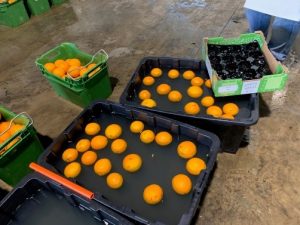

Image 1. Treating oranges in different sanitisers in controlled conditions (80L tubs) (left), and green and blue mould infected fruit following treatment (right).
Results of water quality
All the sanitising treatments, Unipolar® EW system (set at 5, 10 and 15 ppm free Cl2), chlorine as hypochlorite and PAA all had few detectable colony forming units (Figure 1a) and yeast and mould counts (Figure 1b) in the wash water, as compared to the control (packinghouse water).
These results demonstrate the presence of micro biologicals in the packinghouse water coming into the packinghouse but shows that all sanitation treatments resulted in significantly lower total bacterial plate count and yeast and mould counts. This is a good result and justifies the use of sanitisers.

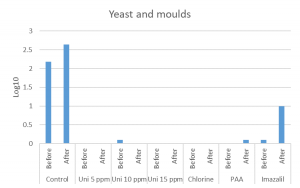
Figure 2a. Effect of the different sanitation treatments on (a) total plate count in water ;
Figure 2b. Yeast and mould count in water in controlled conditions. Water samples were taken before and after fruit treatment.
Green and blue mould
Fungicides are designed to prevent postharvest pathogens and as expected, the application of the postharvest fungicide, imazalil completely prevented green and mould development (Figure 3).
Sanitisers are not used to prevent postharvest decay and this is seen in Figure 4 which shows there was no difference between Unipolar® EW system (set at 5, 10 and 15 ppm free Cl2), chlorine as hypochlorite and PAA in the rate of green and blue mould infection and size of infection following artificial inoculation of the fruit (Figure 2). A follow-up of the levels of natural development of postharvest decay on fruit that had been stored for one month showed there was very natural low infection rates in the fruit and there was no effect of any of the different sanitiser treatments on postharvest decay.
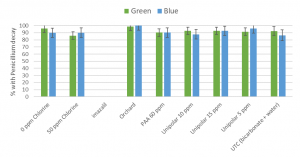
Figure 2. Effect of sanitation treatment on infection rate (%) of green and blue mould (left) in controlled conditions.
Part 2 – Sanitiser comparison in commercial packingline
In parallel to the controlled assessments of the sanitisers (part 1), this trial examined the different sanitising treatments when applied in a commercial packingline: (1) Unipolar® EW system set at 5 ppm free Cl2, (2) Unipolar® EW system set at 10 ppm free Cl2, (3) Unipolar® EW system set at 15 ppm free Cl2 and (4) ‘TsunamiTM’ at the recommended rate (60 ppm PAA). All treatments were conducted on a commercial packingline during regular packing (Image 2a and Image 2b).

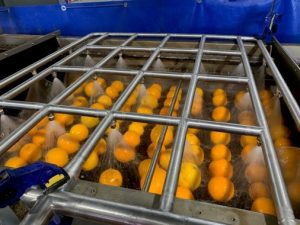
Image 2a The trial Unipolar® EW system in the commercial packinghouse
Image 2b Treatment of oranges with Unipolar® sanitiser sprayed over rolling brushes in the packingline.
Water Quality
All different levels of the Unipolar® EW system (5, 10 and 15ppm free Cl2) resulted in lower total colony forming units and yeast and mould counts (Figure 3).
Water samples were measured before and after treatment of the fruit and the results showed there were low total colony forming units and yeast and mould counts before or after dipping the fruit.
In this packingline, the ‘TsunamiTM’ treatment (peroxyacetic acid and hydrogen peroxide) had lower total colony counts but higher levels of yeast and mould, showing that the PAA has more difficulty in controlling yeast and moulds than bacteria.
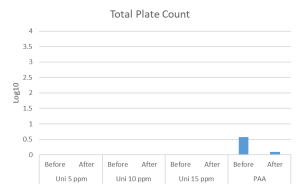

Figure 3. Effect of sanitation treatment on total plate count in water (left) and yeast and mould count in water (right) in commercial packingline. Water samples were taken before and after fruit treatment.
Green and blue mould
There was no difference between the different sanitiser treatments on the incidence and growth of blue and green mould where the decay spores were artificially inoculated into the fruit before treatment.
Summary
All sanitisers, i.e. chlorine as hypochlorite, PAA and Unipolar® EW system (at 5, 10 and 15 ppm free Cl2), were effective in reducing detectable colony forming units and yeast and mould counts in the wash water.
This action is their primary function as sanitisers and why they are used in postharvest horticulture.
In addition, the sanitisers had no effect on green and blue mould decay. These results were expected as sanitisers only clean up the wash water and no not control postharvest decay.
Postscript to Postharvest Trial
The manager at this citrus packinghouse has since installed this Unipolar® EW system this packing season (2020).
At the end of the packing season (December), the manager reflected on the use of the Unipolar® EW system and was happy with its ease of use and efficacy.
In addition to successfully sanitising the wash water, the main benefit has been lower maintenance and running costs without the use chemical sanitisers, i.e. no chlorine or PAA (although it does use table salt (sodium chloride) to help with the electrolysis).
In addition, the EW system was reported to have an unquantifiable benefit on fruit storage and shelf life, with lower levels of decay during shelf life.
The manager also noted that the EW system had been gentler on machinery wear and had reduced maintenance costs in the packingline.
The use of other sanitisers such as PAA which have low pH, can be corrosive to drive chains and gears in the packingline.
The manager commented that while the EW system had an initial high installation cost, it was relatively economical to run and was happy with the decision to install this sanitation system in his packinghouse.
Article written by John Golding, John Archer, Stela Gkountina and SP Singh, NSW DPI.
Acknowledgements
This article is a contribution from the Citrus Postharvest Program (CT19003) funded by Horticulture Innovation and NSW Department of Primary Industries. The authors would like to thank the citrus grower for organising and assisting in these trials. They also thank Unipolar Water Technologies Pty Ltd for running their equipment and assistance in the trial.

Membership
You are not logged in
If you are not already a member, please show your support and join Citrus Australia today. Collectively we can make big things happen.
